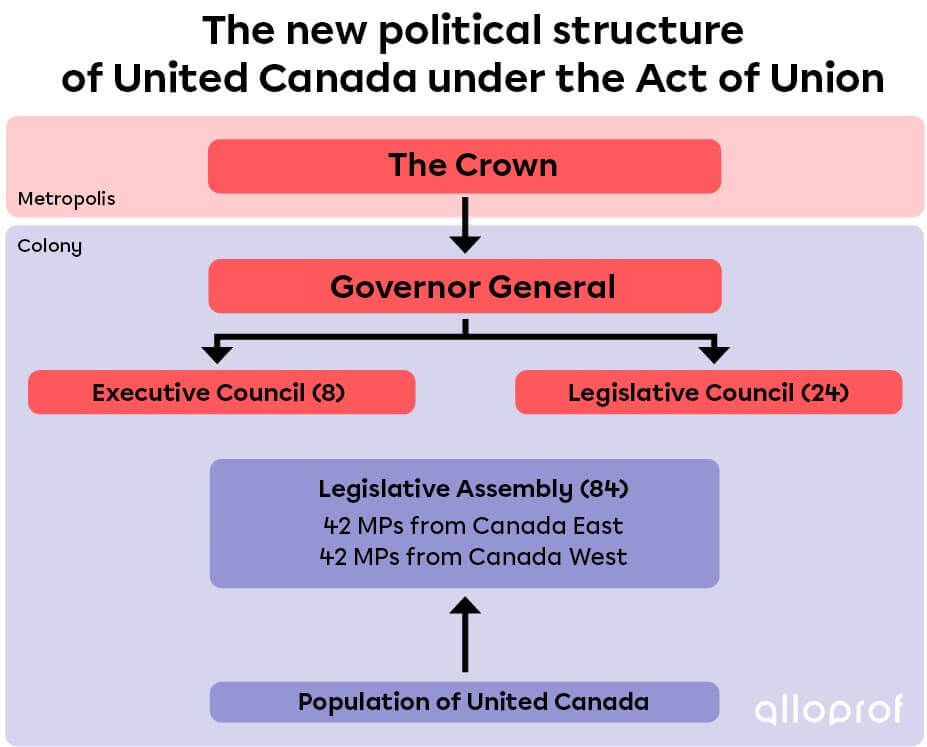In the wake of the rebellions of 1837 and 1838, the British authorities appointed a new governor, a man they trusted named Lord Durham, to investigate the situation in North America. During his investigation, he found that the Constitutional Act of 1791 had caused the rebellions and that constitutional changes were needed in the colonies of Upper Canada and Lower Canada.

John George Lambton, also known as Lord Durham
Lord Durham governed the territory for four months. During this time, he spoke with a variety of people, including reformers in Upper Canada and Anglophones and members of the business class in Lower Canada. When he returned to London in January 1839, he submitted his report, which became known as the Durham Report.
In this report, he criticized the ineffective and corrupt colonial government. He brought up the fact that, under the Constitutional Act, the Legislative Assemblies had no real powers. The governor and his entourage, who were not elected, governed without being accountable to the people.
While he observed problems with the government in all of the British North American colonies, Durham identified an additional issue in Lower Canada, namely the coexistence of two different peoples. In fact, he described this situation as a “racial crisis” between the Francophones and Anglophones who shared the colony’s territory.
At the time, it was a common belief among the British that English values and policies were superior to those of other nations and that societies who applied them would flourish. Lord Durham was no exception so it is unsurprising that he viewed the French-speaking Canadiens as people without history or literature. Predictably, when the Durham Report was published, the perspective and views expressed were unfavourably received by the Francophone population of Lower Canada.
Since he considered Canadiens to be inferior to the British, Durham believed that the assimilation of Francophones should be accelerated. He suggested that a political union of Upper and Lower Canada would achieve this. With one government and one Legislative Assembly representing both territories, the Canadiens would certainly have less influence than the British, who were in the majority. Durham also proposed increasing British immigration to the colony in order to marginalize the Francophones as much as possible.
After pointing out the ineffectiveness of the democratic system established by the Constitutional Act, Durham encouraged the Queen and the British Parliament to grant the people of the two Canadas the ministerial responsibility that they had been demanding for so long.
| Durham’s findings | Solutions proposed by Durham |
| There was a “racial crisis” in Lower Canada. | Accelerate the assimilation of the Canadiens, in part by forming a political union of the two colonies. |
| The colonial government was corrupt. | Grant ministerial responsibility to both colonies. |
Ministerial responsibility means that ministers are elected by the people, are part of the Legislative Assembly and are trusted by the majority of elected members.
In July 1840, just over a year after the Durham report was published, British authorities adopted the Act of Union. This new constitution replaced the Constitutional Act in Upper Canada and Lower Canada. As the name suggests, the Act of Union politically united the two colonies, which would now share the same government and the same Legislative Assembly.

The new political structure of United Canada under the Act of Union
Although the Queen and the British Parliament decided to follow Durham’s recommendations politically, they still refused to grant ministerial responsibility to the colonies.